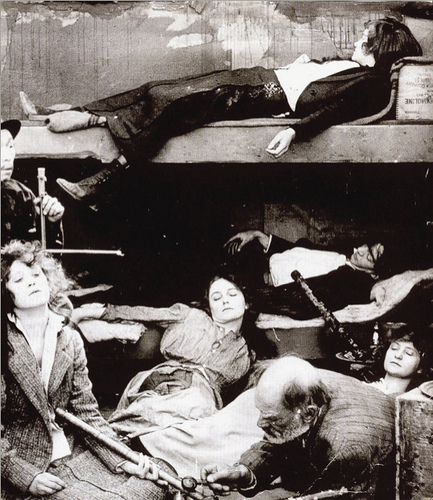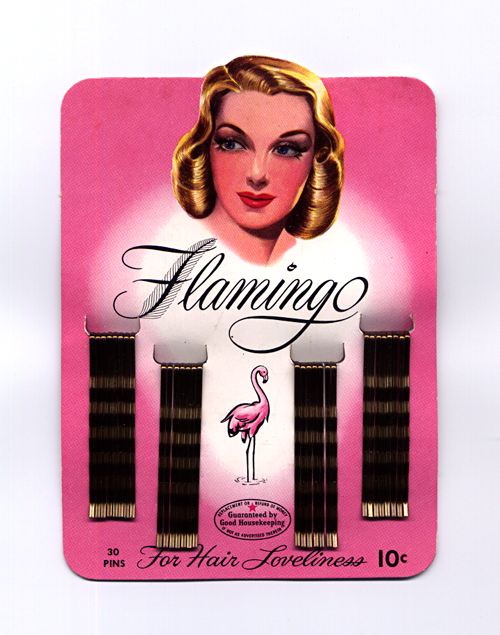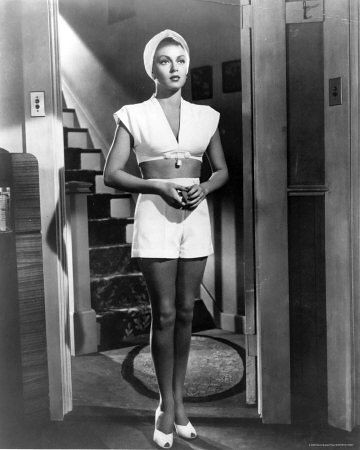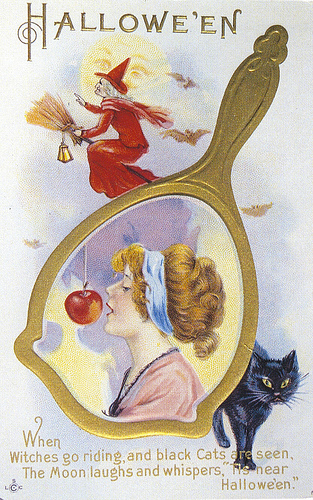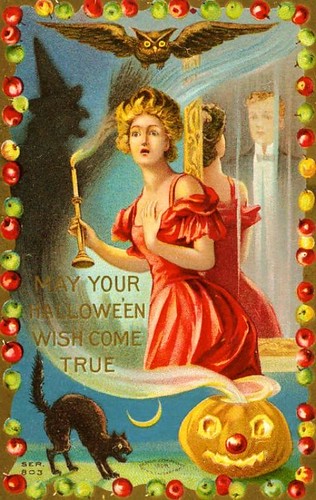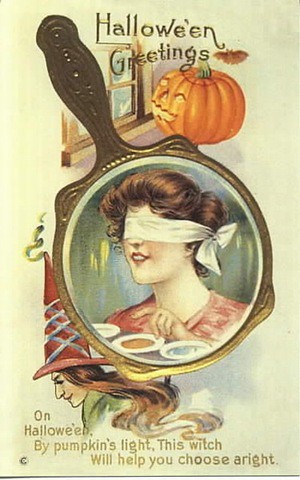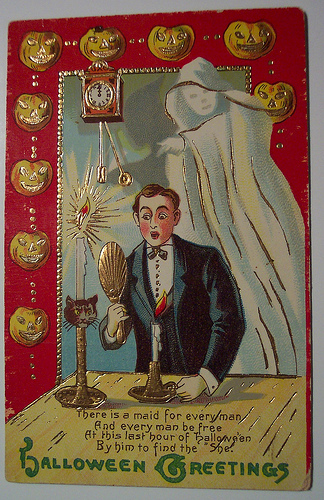Thu 3 Oct, 2013
Tue 28 May, 2013
THE GREAT GATSBY IN FILM
Comments (0) Filed under: UncategorizedTags: 1926, 1949, 1974, 2013, Alan Ladd, Betty Field, Carey Mulligan, F. Scott Fitzgerald, Georgia Hale, Leonardo DiCaprio, Lois Wilson, Mia Farrow, Neil Hamilton, Robert Redford, Warner Baxter
F. Scott Fitzgerald’s novel THE GREAT GATSBY has been adapted for film a few times. The first was in 1926 and starred Warner Baxter, Lois Wilson, Neil Hamilton, and Georgia Hale. As far as anyone knows the trailer for the film is all that survives.
In 1949, THE GREAT GATSBY was once again adapted for film. This time it starred Alan Ladd, Betty Field, and Macdonald Carey.
THE GREAT GATSBY was lavishly produced in 1974, and Mia Farrow and Robert Redford took the lead roles. The first issue of PEOPLE magazine, March 4, 1974, featured Mia Farrow, as Daisy Buchanan, on the cover.
And now, nearly 40 years after the last big budget production of THE GREAT GATSBY, we have Leonardo DiCaprio and Carey Mulligan as Jay and Daisy. I haven’t seen the film yet; I suppose I’ll get around to it eventually. Meanwhile, I think it is time to read the novel again.
Wed 18 Apr, 2012
Black Dahlia Murder: the Crime, the Cosmetics, and the Folksinger
Comments (0) Filed under: UncategorizedTags: Black Dahlia, Los Angeles Police Museum, Michael Dooley, Print Magazine
I was recently interviewed by Michael Dooley for Print Magazine. Dooley is the creative director of Michael Dooley Design, and he also teaches design history at UCLA Extension, Loyola Marymount, and Art Center College of Design. The interview is in two parts, and we covered everything from my interest in historic crime to my love of vintage cosmetics ephemera.
Follow the link to part one of the interview entitled: BLACK DAHLIA MURDER: THE CRIME, THE COSMETICS, AND THE FOLKSINGER
Wed 18 Apr, 2012
BLACK DAHLIA MURDER, PART 2: THE VICTIM’S MAKEUP
Comments (0) Filed under: UncategorizedTags: 1947, Black Dahlia, Elizabeth Short, Los Angeles Police Museum, Michael Dooley, Print Magazine
In part two of my interview with Michael Dooley of Print Magazine, I talk about my collection of vintage cosmetics ephemera, and I also discuss my personality profile of Elizabeth Short (The Black Dahlia) based upon her choice of makeup.
Follow the link to part two of the interview entitled: BLACK DAHLIA MURDER, PART 2: THE VICTIM’S MAKEUP
Fri 12 Aug, 2011
Thanks to all of you who entered to win the free Jacob Bromwell popcorn popper!
The winner is:
Inky Wine
I can hear the pop, pop, pop now. Enjoy!
Mon 1 Aug, 2011
Jacob Bromwell Popcorn Popper Giveaway!
Comments (0) Filed under: UncategorizedTags: classic movie, giveaway, Jacob Bromwell, popcorn
I am pleased to have been contacted by Jacob Bromwell with the offer of one of their great popcorn poppers, to be given away to a lucky Vintage Powder Room reader! Jacob Bromwell has been around since 1819 — so they definitely qualify as vintage.
Next to finding a vintage face powder in mint condition, I adore sitting with my feet up, snacking on freshly popped corn, watching a classic movie or reading.
Because I’m not a camper, I’ll use my popper in my living room fireplace. I have to confess that my idea of communing with nature is watching a documentary on the National Geographic Channel. For those of you who spend warm summer nights under a starry sky having one too many S’Mores around a campfire, this fabulous popper will help you to make a healthier choice.
If you would like to enter the drawing, please email me at: joan@vintagepowderroom.com with your name and shipping address (the giveaway is open to U.S. residents only). One winner will be drawn at random. The contest ends Monday, August 8, 2011, at 12 noon PDT.
Sun 24 Jul, 2011
MISS FREEDOM
Comments (0) Filed under: Hair Net Packages, UncategorizedTags: 1910s, Elizabeth Jane Cochran, Frederic Bartholdi, Joseph Pulitzer, Ken Kesey, Liberty Bell, Miss Freedom, Nellie Bly, Nurse Ratched, Statue of Liberty, The World
It wouldn’t do to let July slip past without acknowledging Miss Freedom. After all, July is the month during which the U.S. celebrates its independence, and that is what the Miss Freedom hairnet package is all about; even though it is ironic that the Miss Freedom hairnet was made of imported English rayon.
With a patriotic red, white, and blue color scheme, and the Liberty Bell depicted behind her, the woman on the cover of the package is a 1940s representation of the Statue of Liberty come to life — minus a torch, a tabula ansata (a tablet evoking the law), and a broken chain at her feet.
The real Statute of Liberty isn’t overtly sexy as is Miss Freedom. The statute, designed by Frederic Bartholdi, is a neoclassical sculpture and represents Libertas, the Roman goddess of freedom; and her formal title is “Liberty Enlightening the World”.
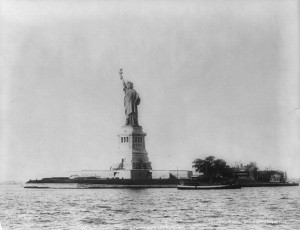 The Statue of Liberty is an icon now but when the idea was first conceived it was a hard sell and fundraising was difficult; in fact, the project was threatened due to a lack of funds. Publisher Joseph Pulitzer of the newspaper The World initiated a drive for donations to complete the project and the campaign resulted in over 120,000 contributors, most of whom gave less than a dollar.
The Statue of Liberty is an icon now but when the idea was first conceived it was a hard sell and fundraising was difficult; in fact, the project was threatened due to a lack of funds. Publisher Joseph Pulitzer of the newspaper The World initiated a drive for donations to complete the project and the campaign resulted in over 120,000 contributors, most of whom gave less than a dollar.
Joseph Pulitzer arrived in the U.S. from Budapest in 1864 and immediately enlisted in the Lincoln Calvary, he was 18. Following the Civil War Joseph tried, unsuccessfully, to hold down a job. He worked as a mule hostler but quit after two days stating “The man who has not cared for sixteen mules does not know what work and troubles are”.
Pulitzer was cut out for more intellectual pursuits than tending mules. Joseph became an attorney in 1868 but unfortunately his broken English didn’t gain him many clients. Finally, later in 1868, Joseph was offered a job as a reporter for the Westliche Post.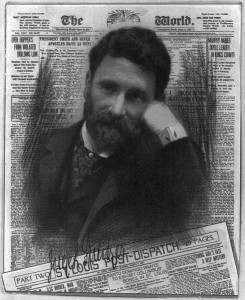
Joseph had a demonstrated flair for reporting and business. In 1872 he bought a share in the Westliche Post for $3,000 and sold it for a profit in 1873. In 1879 he purchased the St. Louis Dispatch and the St. Louis Post and merged them as the St. Louis Post-Dispatch, which remains St. Louis’ daily newspaper. While at the Post-Dispatch, Pulitzer became a champion of the common man with exposes and a hard-hitting populist approach.
By 1883 Joseph Pulitzer was a very wealthy man in a buying mood, so he purchased the New York World from Jay Gould who had been running the paper at a loss (about $40,000/year). The energetic publisher turned the paper around by shifting the focus onto human interest stories, scandal, and sensationalism. Under Pulitzer’s stewardship circulation of The World grew from 15,000 to over 600,000 — it became the largest newspaper in the country.
 In 1887 America’s pioneer female journalist, Elizabeth Jane Cochran (aka Nellie Bly), left the Pittsburgh Dispatch after being relegated to theater and arts reporting — topics considered to be more appropriate for a woman than the hard-hitting stories Nellie preferred to cover.
In 1887 America’s pioneer female journalist, Elizabeth Jane Cochran (aka Nellie Bly), left the Pittsburgh Dispatch after being relegated to theater and arts reporting — topics considered to be more appropriate for a woman than the hard-hitting stories Nellie preferred to cover.
Following her departure from the Pittsburgh Dispatch, Nellie went to New York where she joined the reporting staff of the World and accepted a risky undercover assignment; she agreed to feign insanity to investigate reports of brutality and neglect at the Woman’s Lunatic Asylum on Blackwell’s Island.
Nellie practiced deranged expressions in front of a mirror for a night ( I’d have loved to be a fly on the wall for that)! Having perfected her demented look, she then checked into a working class boardinghouse. She convinced the other boarders that she was crazy and was soon carted off to Bellvue Hospital where she was pronounced “undoubtedly insane” by the head of the insane pavilion.
Dubbed the “pretty crazy girl” by the media (they were unaware of her true identity and that she was employed by Pulitzer), Nellie was committed to the asylum where she experienced the horrendous conditions firsthand. The nurses were abusive and would beat patients who didn’t respond immediately to their commands. Nellie also concluded that many of the patients were as sane as she was. After ten days of mistreatment Bly was released from the asylum at the World’s behest. Her report, “Ten Days in a Mad-House” won her lasting fame. The report was responsible for launching a grand jury investigation which resulted in a budget increase of $850,000 for the Department of Public Charities and Corrections in New York.
 Whenever I think of asylums and evil nurses, I always conjure up a picture of Nurse Ratched (Big Nurse) from the 1975 film based upon Ken Kesey’s novel “One Flew Over the Cuckoo’s Nest”. But I digress.
Whenever I think of asylums and evil nurses, I always conjure up a picture of Nurse Ratched (Big Nurse) from the 1975 film based upon Ken Kesey’s novel “One Flew Over the Cuckoo’s Nest”. But I digress.
In 1895 Nellie Bly married Robert Seaman who was 40 years her senior. Seaman was a millionaire manufacturer, so Nellie retired from journalism to become the president of the Iron Clad Manufacturing Co., which made steel containers. Bly received two US patents, one for a novel milk can, and the second one for a stacking garbage can.
For a time Nellie was one of the leading female industrialists in the US, but she was forced into bankruptcy by embezzling employees and resumed her career as a journalist. She covered the women’s suffrage convention in 1913, and reported from Europe’s Eastern Front during World War I. 
Joseph Pulitzer, who had wisely hired Nellie Bly, died of tuberculosis on his yacht, the Liberty, on October 29, 1911. Pulitzer’s yacht lived on, at least for a while. The Liberty served as a hospital ship during World War I and was broken up in 1937.
Nellie Bly died of pneumonia at St. Mark’s Hospital in New York in 1922 at age 57.
Mon 17 Jan, 2011
FILM NOIR BLONDE
Comments (0) Filed under: UncategorizedTags: 1940s, film noir, Lana Turner, The Film Noir Blonde, The Postman Always Rings Twice
I was recently interviewed by the mysterious, and stylish, FILM NOIR BLONDE for her blog. Over the course of the two part interview we talked about my collection of vintage cosmetics ephemera, as well as a runaway lipstick tube in the 1946 film noir THE POSTMAN ALWAYS RINGS TWICE. Please visit FILM NOIR BLONDE she is, as she says, “Black & white and chic all over”!
Sun 31 Oct, 2010
HAPPY HALLOWEEN
Comments (0) Filed under: UncategorizedTags: 19th Century, 20th Century, divination, Halloween, legend, mirror, tradition, women
Both the Vintage Powder Room blog and Facebook page use an image of a woman gazing into a mirror as the profile graphic. The image for this blog is a detail from a hairnet package in my collection. The image for VPR’s Facebook page is of the actress Ann Sheridan gazing into a mirror. How fitting it is that there is a Halloween tradition that relies on a woman looking into a mirror.
The tradition, a form of divination, was popular during the late 19th and early 20th centuries. It was said that if a young, unmarried woman looked into a mirror at midnight on Halloween, she would see her one true love.
I’m posting a few of the images here for your viewing pleasure.
May your wish come true.
And may your Halloween be lucky!
Unsure of your choice? Let the witch help you.
May you see your true love’s face.
Why should the ladies have all of the fun? Here’s something for the gentlemen.
Happy Reflections Everyone!
Mon 2 Aug, 2010
HI-HAT
Comments (0) Filed under: UncategorizedTags: African American, Avon, Betty Boop, Billie Holiday, Cab Calloway, Cotton Club, Duke Ellington, Ethel Waters, Harlem, Madam C.J. Walker, Michael Jackson, moon walk, opium den, scat

There were many companies, like Hi-Hat, that specialized in manufacturing face powder, hair treatments, and other cosmetics for African American women.
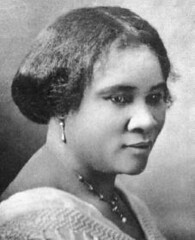
Madam C.J. Walker
The most important and successful African American cosmetics entrepreneur was Sarah Breedlove (Madam C.J. Walker) – her story is inspiring.
Sarah was born (one of six children) in Delta, Louisiana on December 23, 1867. Because she’d lost both of her parents by the time she was seven years old, she moved in with her older sister, Louvenia, and brother-in-law, Willie Powell. Powell was abusive to her, so she married Moses McWilliams when she was 14 years old to escape. Three years later her daughter, Lelia McWilliams was born. When Sarah was 20, her husband died. Shortly afterward she moved to St. Louis where three of her brothers were barbers. She may have learned some hair care tips from her brothers, but it would be her own drive and initiative that would enable her to create the company that would make her famous, and rich.
On August 11, 1894 Sarah married a man named John Davis. That marriage ended around 1903. In January 1906 she married a newspaper sales agent, Charles Joseph Walker. They divorced in 1912.
 Walker would later say: “When we began to make $10 a day, [my ex-husband] thought that was enough, thought I ought to be satisfied.” “But I was convinced that my hair preparation would fill a long-felt want. And when we found it impossible to agree, due to his narrowness of vision, I embarked on business for myself.” Clearly Walker was a woman who knew what she wanted, and was unafraid of hard work.
Walker would later say: “When we began to make $10 a day, [my ex-husband] thought that was enough, thought I ought to be satisfied.” “But I was convinced that my hair preparation would fill a long-felt want. And when we found it impossible to agree, due to his narrowness of vision, I embarked on business for myself.” Clearly Walker was a woman who knew what she wanted, and was unafraid of hard work.
Her business paradigm was innovative and in the years since it has been used by other companies such as the California Perfume Company (their name was later changed to AVON). Madam Walker knew marketing strategies of the past had focused mostly on advertising; she also knew that the majority of black women at the time were unable to read. Thus, she began a uniquely successful campaign of face to face network marketing. But what made Walker a success was not just the fact that she knew and understood her market; she was, after all, her own best customer. Walker was able to get the market on her side by using it as manpower.
In May 1918 she moved to her Irvington-on-Hudson, New York estate, Villa Lewaro, which had been designed by Vertner Tandy, the first licensed black architect in New York State and a founding member of Alpha Phi Alpha fraternity.
One of her neighbors was industrialist John D. Rockefeller and, it may come as no surprise that most of her stuffy, white, upper-crust neighbors had a less than welcoming attitude toward her. “One of the race,” wrote one newspaper, “is invading the domains of New York’s aristocracy.” The New York Times even wrote, “No woman of her race could own such a place. Does she really intend to live there?”
Madam C.J. Walker died at Villa Lewaro on Sunday, May 25, 1919 from complications of hypertension. She was only 51. At her death she was considered to be the wealthiest African-American woman in America and known to be the first Africa-American millionaire. Her daughter, A’Lelia Walker, became the president of the C.J Walker Manufacturing Company.
I’ve been told that Madam Walker’s business model is still studied today in business schools. I don’t know if that is true, but if it isn’t, it ought to be.
Apart from suggesting to me the story of Madam C.J. Walker, the Hi-Hat face powder box calls to mind images of places like the famous Cotton Club, and people like the incomparable Cab Calloway. By the early 1930s Calloway’s band was the “co-house” band with Duke Ellington.

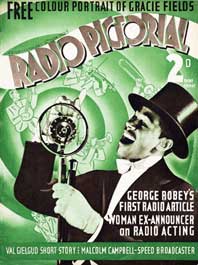 Calloway, who decided to pursue music rather than law as a career, was so hep that in 1944 The New Cab Calloway’s Hepsters Dictionary: Language of Jive was published. It was an update of an earlier book in which Calloway set about translating jive for fans who might not know, for example, that “kicking the gong around” was a reference to smoking opium.
Calloway, who decided to pursue music rather than law as a career, was so hep that in 1944 The New Cab Calloway’s Hepsters Dictionary: Language of Jive was published. It was an update of an earlier book in which Calloway set about translating jive for fans who might not know, for example, that “kicking the gong around” was a reference to smoking opium.
Hey, I knew that – didn’t you?
Calloway was also a terrific scat singer. For those of you unfamiliar with the term it is, according to Wikipedia: “… vocal improvisation with random vocals and nonsense syllables or without words at all. Scat singing gives singers the ability to sing improvised melodies and rhythms, to create the equivalent of an instrumental solo using their voice.”
Calloway wasn’t only a first class scat sinner – he’s the father of the “moon walk”. That’s right, if you thought that Michael Jackson invented “moon walking” – wrong. Check out this video of Cab and Betty Boop. You’ll see the genesis of the moon walk, and hear Cab scat.
I need a time machine. Can someone get one for me? Right now I feel like putting on my best gown and heading over to the Cotton Club in Harlem during the 1930s. I’ll sip a few cocktails at a front table. And maybe I’ll get lucky and Cab and his band will be there, or even Billie Holiday or Ethel Waters.
To finish off the evening I’ll grab a taxi to Chinatown – maybe kick a gong around.
